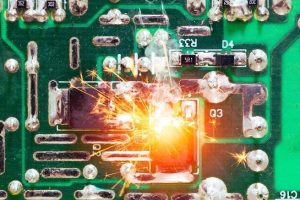Impact Electronic PCB Practices
Industry standards impact electronic pcb practices in a number of ways. They can reduce production costs, ensure product quality and enable companies to meet customer expectations. For example, the IPC defines different classes of PCBs and establishes acceptance standards that companies must adhere to during manufacturing. In addition, IPC-A-610 lays out criteria for visual inspection of electrical and electronic assemblies, including through hole and surface mount components.
The needs of a particular project determine several aspects of a PCB, such as the materials and the final appearance. For instance, a PCB for a medical device will typically have flexible bases to allow it to bend and fit into tight spaces. The PCB will also often have high-speed transmission lines, differential pairs and impedance controlled traces that must be routed according to strict performance rules.
Another aspect of a good electronic pcb design is minimizing heat spots and temperature inconsistencies. This is accomplished by establishing effective thermal paths and dissipating excess heat efficiently. Some examples of potential heat sources include voltage regulators, op-amps and transistors. The use of a thermal imager can help detect these areas and take steps to correct them.

How Do Industry Standards Impact Electronic PCB Practices?
Keeping track of the different standards that apply to an electronic pcb is important for manufacturers. These rules can vary by country, but they are generally similar. They can cover anything from the material used to the quality of workmanship and testing. In addition, they may address environmental issues such as moisture uptake and corrosion of copper and other metals.
One of the most important standards is IPC-A-610. This is the widely used standard that sets acceptance criteria for visual inspection of soldered electronic and electrical assemblies. It includes requirements for reflow and wave soldering as well as for terminals, connectors, wiring, insulation and other parts of the assembly. It is a must-have for any company that produces PCBs.
Following industry standards is also important for electronic pcbs because it reduces waste and keeps production costs low by eliminating the need to rework and redo projects. In addition, it improves efficiency and helps manufacturers keep their competitiveness and credibility.
To reduce costs and maximize quality, PCB designers should implement a DRC as often as possible throughout the design process. This will prevent small mistakes and questionable choices from building up over time, resulting in massive changes at the end of the design cycle.
Besides DRC, manufacturers should also run circuit board assembly inspections as often as possible. This will help catch problems before they become expensive and time-consuming to fix. In addition, they should use protective materials to protect PCBs from moisture uptake, corrosion and other factors that can affect product performance.
It is also a good idea to implement IPC-J-STD-075, which provides advice for handling and storage of PCBs. It can help avoid moisture uptake, solderability degradation and physical damage, and it is especially important during the transition to lead-free solder. By following these best practices, electronic pcb manufacturers can produce high-quality products and stay competitive in the market.


